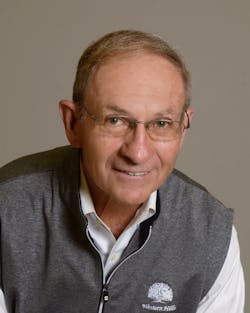Safety professionals are required to comply with a number of rules and regulations, but in order to create lasting organizational changes, they need to appeal to—and inspire—their colleagues.
EHS Today spoke with Rick Fulwiler, Ph.D., president of Transformational Leadership Associates, and Stephen Jenkins, corporate director of health and safety with Cintas Corp., about how to create a culture of safety and explore what’s possible when an organization leads with safety.
Jenkins and Fulwiler will speak at the 2022 Safety Leadership Conference, being held in Cleveland from Oct. 18-20. They will be delivering a sure-to-be lively and inspiring presentation on workplace culture, entitled “A Strong Safety Culture—No and Heck No!” Below is a preview of what to look forward to this fall.
EHS Today: When you talk about transformational safety, how exactly can safety leadership be transformational? What does that look like in practice?
Fulwiler: First, the safety leadership of an enterprise needs to understand the difference between transactional and transformational leadership. Then, they need to coach the leadership of the enterprise on becoming more transformational by focusing on whether they are listening to the wants and needs of the shop floor workers. Do they show they actually care about the workers? Do they communicate in a way that is meaningful to the workers? Do they engage the workers in the work process? Are they open for input from the workers?
How can a company create and sustain safety excellence?
Fulwiler: Safety has to move from being a priority to becoming one of the top values of the enterprise. Safety has to be embedded in the culture of the enterprise, i.e., part of the DNA of the enterprise. Safe practices have to become as instinctive as putting on one’s seat belt. There has to be a clear message of mutual self-interest.
Jenkins: Excellence emanates from consistently repeating successful habits until they become rituals. It also means that employees may have unsuccessful habits and sometimes fail and need coaching. That’s part of the mutual self-interest—developing successful rituals together.
How can companies demonstrate they care about their employees and their safety?
Fulwiler: First, senior leadership needs to communicate that their employees are the most valuable part of the enterprise—they are not just cogs in a wheel. They do this by engaging the workers in the overall safety process. Then, they need to communicate that the safety of their workforce is one of the top values of the enterprise. The simplest way to accomplish this is to talk with the workers about their jobs and their job safety in a caring and empathic manner.
Jenkins: Safety follows culture. The company first has to have a culture of caring. Recognizing contributions to the workplace community and broader community [along with] recognizing growth and employees taking opportunities to develop are two great ways for companies to show they care.
What is one aspect of workplace safety that keeps you up at night?
Jenkins: That we make safety and health (S&H) too complicated because it doesn’t match the workplace culture, is too prescriptive or doesn’t reflect the needs of the employees.
Given the current state of workplace safety, what are you most looking forward to in the future?
Fulwiler: That the concept of transformational safety leadership is more broadly embraced.
Jenkins: The evolution of bottom-up S&H, where frontline contributes more broadly to S&H, including job design and risk elimination. S&H professionals or experts may think they have eliminated the risk but commonly introduce another issue. When the solution generator is not the person who does the job and doesn’t understand the job implicitly, something gets missed.
What is the single most important change safety professionals can make to the workplace starting today (or tomorrow)?
Fulwiler: Understanding the importance of engaging the workforce—and that transformational leadership is the way to engage the workforce.
Jenkins: Learning from employees, truly listening and understanding their workplace culture and that the workforce includes everyone at the workplace.


